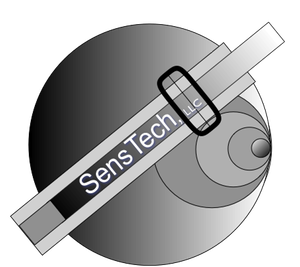Glossary
A list of acronyms and abbreviations used on this website.
- DCL - Deep Creek Lake
- ACCRETION - Build up of beach materials, water borne or air borne, gravel to silt and clay size particles.
- ALONGSHORE (LONG SHORE) – Parallel to and near the shoreline.
- AFORESHORE (FORESHORE) – The part of the shore between the highest reach of the wave action at high stage and the lowest extent of the backwash at lowest stage.
- AQUIFER – A formation of porous material containing water that can be withdrawn by pumping.
- BATHYMETRY – Measurement of depths of water and/or sediment and plotted onto a horizontal map surface; also information derived from such maps and measurements.
- BATTER – Leaning the face of a wall back into the shore to improve stability.
- BLUFF – A nearly vertical slope produced by wave action at the current limit of the reach of the breaking wave energy. Bluff recession is the retreat of the bluff due to erosion.
- CLAY – Particles less than 0.002 mm (2 microns) in diameter.
- COBBLES – Loose stone larger than gravel; approximately three to 10 inches (six cm to more than 25 cm) in average diameter.
- COHESIVE SEDIMENT – Sediment with significant amounts of clay, having properties that cause the materials, silt and sands, to bind together.
- CREEP – Very slow down slope movement of sediment.
- CRITICAL ZONE – Soil mass within a slope subject to erosion from wind or wave action.
- DATUM – Reference point for elevations. At Deep Creek Lake the datum is the elevation of the crest of the emergency spillway at the impoundment designated to be 2462.
- DEEP-WATER – The depth beyond which surface waves are little affected by the bottom. Generally water deeper than one half of the surface wave is considered to be deep water.
- DOWN-CUTTING – Erosion of the lake bed.
- ELEVATION – The height of a point in reference to the datum. On Deep Creek Lake elevations are referred to the crest of the emergency spillway set at 2462.
- EROSION – The wearing away of land or lake bed by the action of natural forces.
- FETCH – The length of the water surface exposed to the direction of the wind. Wind generated wave size is determined by the strength of the wind and the length of exposure.
- FILTER FABRIC (GEOTEXTILE) – Woven or non woven manmade material that limits the passage of the design grain size but passes water.
- GABION – A wire mesh basket containing stones or crushed rock designed to protect a slope by dissipating the wave energy by moving the rock around in the mesh container.
- GRAVEL - A small, loose stone; approximately 0.08 inches-3 inches (2-76 mm) in diameter.
- GROUND WATER – Subsurface water below the level where all of the spaces between the soil particles are filled with water sometimes referred to as the water table.
- HYDRAULIC CONDUCTIVITY – The rate of flow of a unit volume of water per unit cross section area.v
- LITTORAL – Pertaining to the shore of the lake. Littoral material is sediment that is moved by waves and currents.
- PERCHED WATER TABLE – Ground water in a saturated zone with an impermeable bottom layer. There is an unsaturated zone below the impermeable bottom and above the water table.
- PERMEABILITY – Ability to transport water through the soil or rock structure.
- PIEZOMETRIC WATER SURFACE – The level to which water will rise in a vertical hole drilled into a water bearing, water transporting aquifer layer because of higher resistance to flow in soils above and below, i.e. lower hydraulic conductivity.
- PHREATIC SURFACE- The top flow line at the upper seepage boundary in a sloped water table.
- POROSITY – The percentage of the total volume of the material occupied by water or air, but not solid particles.
- PROBABILITY – The chance that a certain event will occur, or be exceeded usually expressed as “p” with a value between 0 and 1.
- RIPERIAN ZONE - The interface between land and a stream
- REACH – A stretch of shoreline that has characteristics in common.
- RECESSION – The landward movement of the shoreline, or the edge of the bluff.
- REVETMENT – A structure of stone or concrete to protect a shore against erosion by wave action often used to refer to shoreline protection structures with sloping faces.
- RIP-RAP – Protective layers of stone randomly placed to stabilize the bank. The size of the stones and the angle of repose determine the effectiveness of the protection.
- SAND – Rock grains that are 0.0025 inches to 0.19 inches (0.0625 to 4.76 mm).
- SCOUR – Removal of material by waves, especially at the base or toe of a shoreline structure.
- SEDIMENT – Loose fragments of rocks, minerals, soil, or organic matter transported by air, wind, ice and water, then deposited. Also, materials that precipitate from the overlying water or chemically form in place are sediment. Sediment includes all of the unconsolidated material on the lake bed.
- SEEP OR SPRING – Where the water table extends out of the surface water will flow.
- SEICHE – An oscillation of the water mass in the lake that continues after the originating force has stopped. In Deep Creek Lake the seiche is related to the withdrawal of water through the plant.
- SHALLOW WATER – A depth of water such that water waves are affected by the lake bottom. The affectation begins when the the depth of the water is less than one half of the wavelength.
- SHEET EROSION – The removal of a thin layer of soil by the action of wind or water.
- SILT – Particles between 0.002 mm and 0.74 mm in diameter 2 microns and 740 microns).
- SLOPE – The degree of surface inclination above a horizontal reference surface, usually expressed as a ratio, i.e. 2:1. That is, two feet horizontal to one foot vertical.
- SLUMP – The movement of a soil mass downward along a curved failure surface with the lower portion moving outward. Slump is typically seen along road banks.
- SWASH ZONE – The area of wave action on a beach face from the lower limit of the wave run down to the upper limit of the wave run up.
- TOE EROSION – Washing away of sediment in the zone of the shoreline in contact with the action of the waves. Toe here means at the foot of the bank.
- UPLAND – Land that is above the reach of waves and landward of the beach.
- WATER WAVE – A moving ridge, deformation, or undulation of the water surface.
- WAVE BREAKING – The breakdown of the wave profile during which the wave energy is transferred to the beach or reflected.
- WAVE HEIGHT – The vertical distance between a crest and the adjoining trough.
- WAVE LENGTH – The horizontal distance between two adjacent successive wave crests.v
- WAVE REFLECTION – The process by which the wave energy bounces off the obstacle. The reflected wave energy will be reduced by the amount lost to the obstacle.
- WAVE PERIOD – The length of time for a wave crest to travel one wavelength.
- WAVE TROUGH – The lowest water surface between two adjoining wave crests.
- WETLAND – Land where enough time has passed in a saturated condition for the soil change into a form amenable to the proliferation of unique plants and animals.





